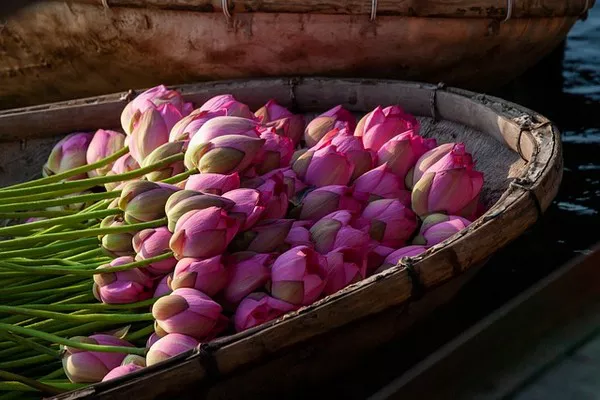Flowers have long been cherished for their vibrant colors, delicate fragrance, and ability to convey emotions. While fresh flowers can brighten any space, they have a relatively short lifespan. However, there is a wonderful way to extend the beauty and sentiment of your favorite blooms: flower dehydration. This age-old preservation technique not only allows you to enjoy your flowers for years to come but also offers a creative outlet for crafting and decorating. In this comprehensive guide, we will walk you through the art of dehydrating flowers, step by step.
Why Dehydrate Flowers?
Before diving into the process, it’s essential to understand why one might choose to dehydrate flowers. Dehydrated flowers, also known as dried flowers, possess several advantages over their fresh counterparts:
Longevity: Dehydrated flowers can last for months or even years if properly preserved, allowing you to cherish the beauty of your favorite blooms indefinitely.
Decorative Purpose: Dried flowers are incredibly versatile and can be used for various decorative purposes, from creating unique arrangements to crafting wreaths, potpourri, and more.
Sentimental Value: Dehydrated flowers can hold deep sentimental value, whether they’re from a special occasion like a wedding, anniversary, or a bouquet gifted by a loved one.
Year-Round Availability: With dehydrated flowers, you can enjoy your favorite blooms year-round, regardless of the season.
Now, let’s explore the step-by-step process of dehydrating flowers.
Materials You’ll Need
Before you start dehydrating flowers, gather the following materials:
Fresh Flowers: Choose flowers at their peak, just before they fully open. This ensures they will retain their shape and color during the drying process.
Scissors or Pruning Shears: For trimming and preparing the flowers.
String or Rubber Bands: To bundle and hang the flowers for drying.
Dark, Dry, and Well-Ventilated Space: To hang the flowers, preferably with low humidity.
Hangers or Hooks: To suspend the flowers while they dry.
Paper Bags or Cardboard Boxes: To cover the flowers while they dry, protecting them from dust.
Silica Gel or Desiccant: Optional, for more delicate flowers or when a faster drying method is preferred.
Step-by-Step Guide to Dehydrating Flowers
1.Select the Right Flowers: Choose flowers that are in prime condition. Avoid any with signs of wilting, discoloration, or damage.
2. Prepare the Flowers: Trim the stems of your selected flowers to the desired length, typically around 6-8 inches. Remove any excess leaves, as they can slow down the drying process.
3. Bundle the Flowers: Group 5-10 flower stems together, securing them with string or rubber bands at the base of the stems. Ensure that the bundles are uniform in size to ensure even drying.
4. Hang the Flowers: Find a suitable location with low humidity, good air circulation, and minimal direct sunlight. Hang the flower bundles upside down from hangers or hooks. Make sure they are not touching each other, as this can lead to mold growth.
5. Cover the Flowers: To protect the flowers from dust and light, place paper bags or cardboard boxes over them. Make sure the covers do not touch the flowers.
6. Monitor the Drying Process: Depending on the type of flowers and environmental conditions, drying can take anywhere from one to three weeks. Check the progress regularly. Flowers are ready when they feel dry and papery to the touch.
7. Optional: Use Silica Gel: For more delicate flowers that are prone to losing their shape and color during the drying process, you can use silica gel or a desiccant. Simply bury the flowers in a container of silica gel and let them dry for a few days.
8. Seal and Store: Once your flowers are thoroughly dried, carefully remove them from the drying location. Seal them in an airtight container or display them in a vase to enjoy their beauty.
Tips for Successful Flower Dehydration
Patience is Key: Rushing the drying process can lead to unsatisfactory results. Give your flowers the time they need to dry properly.
Choose the Right Flowers: Not all flowers are suitable for drying. Experiment with different varieties to find the ones that preserve well.
Avoid Humidity: High humidity can hinder the drying process and promote mold growth. Ensure your drying area is as dry as possible.
Temperature Consideration: Optimal drying temperature ranges from 60°F to 90°F (15°C to 32°C). Avoid extremely hot or cold environments.
Minimal Handling: Handle the flowers as little as possible during the drying process to prevent damage.
Maintain Color: Flowers often lose some color during drying. To preserve color, dry them in a dark space.
Conclusion
Dehydrating flowers is a timeless art that allows you to capture the beauty and sentiment of your favorite blooms indefinitely. With the right materials, careful preparation, and a bit of patience, you can create stunning dried flower arrangements, wreaths, and other decorative items that will bring joy and beauty to your surroundings year-round. Whether you’re a seasoned florist or a novice crafter, the art of dehydrating flowers offers endless opportunities for creativity and self-expression. So, gather your flowers, follow these steps, and embark on a journey of preserving beauty that will last a lifetime.


